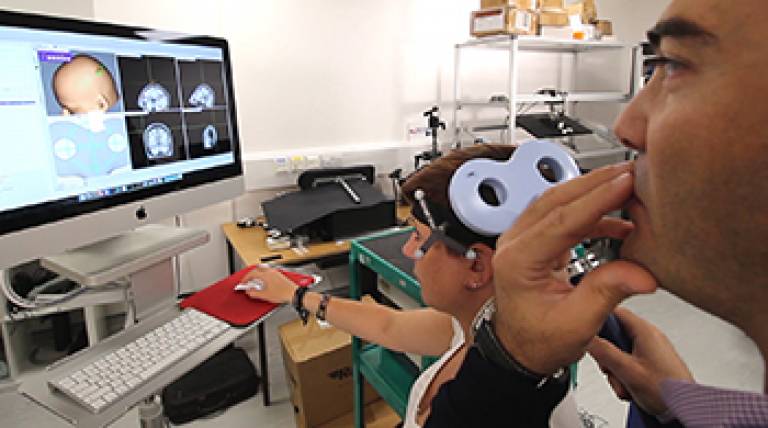Scientists discover how we sense 'stiffness'
13 October 2016
Every day, people use their hands effortlessly to assess an object's stiffness, like the ripeness of a piece of fruit.
 For the first
time an international team of scientists led by UCL, have discovered the area in the brain where stiffness perception
is formed. The findings, published in the Journal of Neuroscience, could aid rehabilitation in patients with sensory impairments.
For the first
time an international team of scientists led by UCL, have discovered the area in the brain where stiffness perception
is formed. The findings, published in the Journal of Neuroscience, could aid rehabilitation in patients with sensory impairments.
Hands do not have sensors to directly inform the brain about an object's stiffness. To uncover the link between our brain and our hands, researchers focused their attention on how motion and sensory inputs are combined and processed. The team looked to the posterior parietal cortex (PPC); a key part of the brain which plays an important role in planning movements, spatial reasoning and attention. Could the PPC also be involved in stiffness perception?
Lead researcher Dr Marco Davare (UCL Institute of Neurology) said: "There is already evidence that a position controller exists in this brain area, however it is still unknown whether this area also combines force and position information - a prerequisite for us to sense stiffness."
Sensory signals such as position and force travel back to the brain and are combined with a copy of motor commands to adjust movement and provide us with a sense of the environment.
Dr Davare said: "For some actions, we clearly rely on one of these signals more than the other. For example we rely on position feedback when reaching for a pen, but on force feedback when putting pressure on the nib to write."
To test their theory, researchers from UCL and Ben-Gurion University of the Negev (Israel) set up a virtual reality environment whereby participants were asked to probe different virtual force fields using a robotic stylus and report which one was stiffer.
The team attempted several experiments with transcranial magnetic stimulation over the PPC and another area of the brain involved in motor control known as the dorsal premotor cortex. The results showed that subjects made errors in sensing stiffness when the PPC was stimulated - but not the dorsal premotor cortex.
The study, funded by the Biotechnology and Biological Sciences Research Council (BBSRC) and the Royal Society, sheds light on brain mechanisms essential to the interaction between our movements and their effect on sensory perception.
Dr Davare, UCL said: "The hand is a frontier between the brain and our surrounding environment: how I move my hand has a consequence on what my hand can feel. Our findings could have considerable impact on the development of virtual reality systems and could help to inform treatments to improve quality of life for patients with sensory impairments."
Links
- Research paper in Journal of Neuroscience
- Dr Marco Davare's academic profile
- UCL Institute of Neurology
- Biotechnology and Biological Sciences Research Council (BBSRC)
Image
- Dr Davare demonstrating the technique (courtesy of BBSRC)
Video
- Virtual reality games reveal the sense of stiffness (courtesy of BBSRC)
Source
Media contact
Harry Dayantis
Tel: +44 (0)20 3108 3844
Email: h.dayantis[at] ucl.ac.uk
 Close
Close

